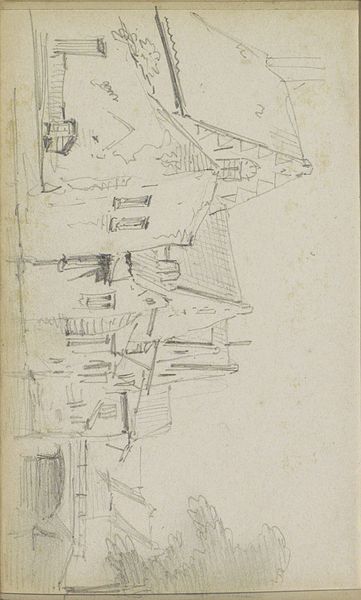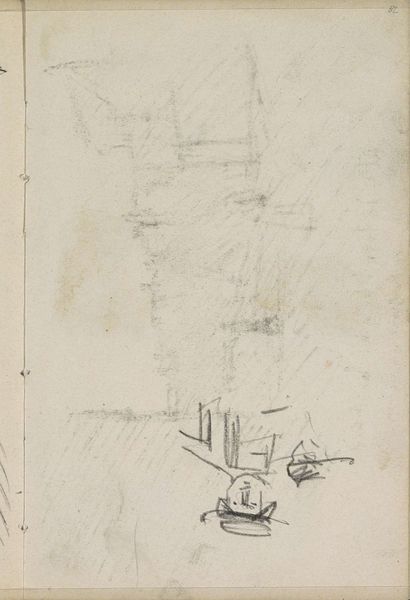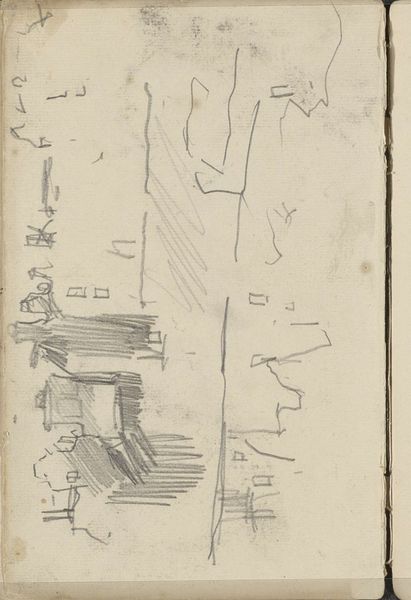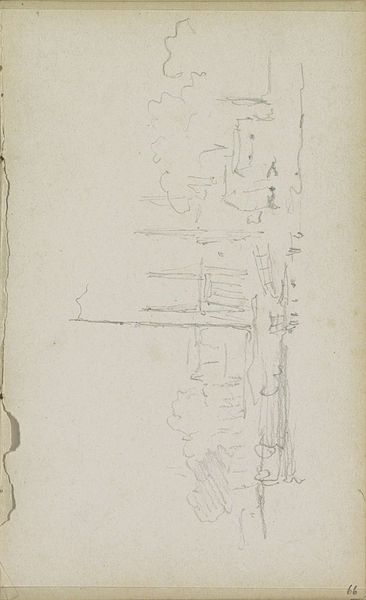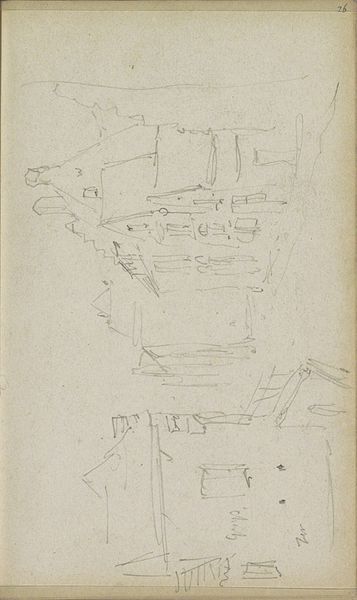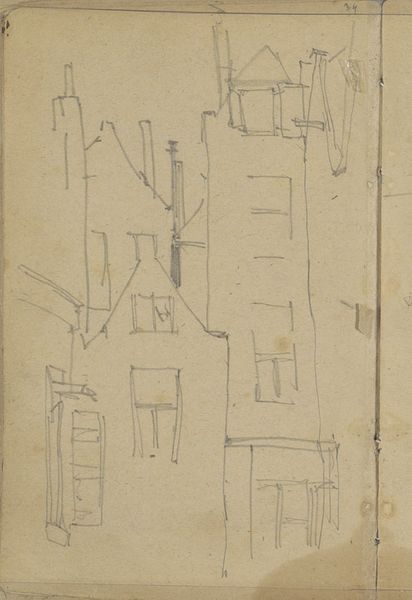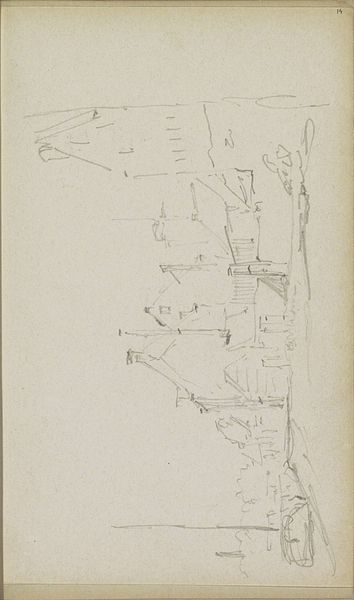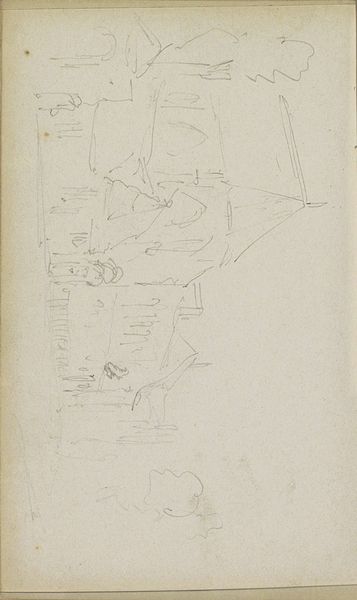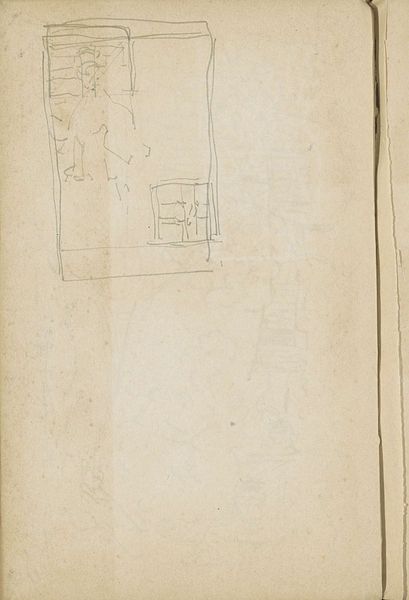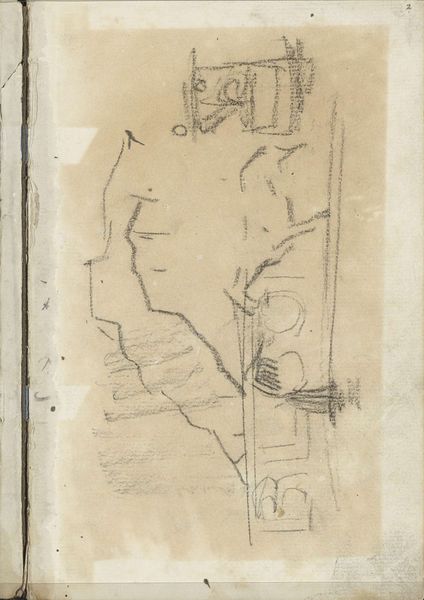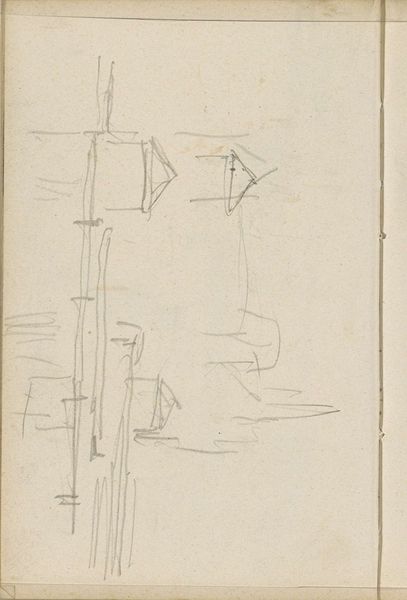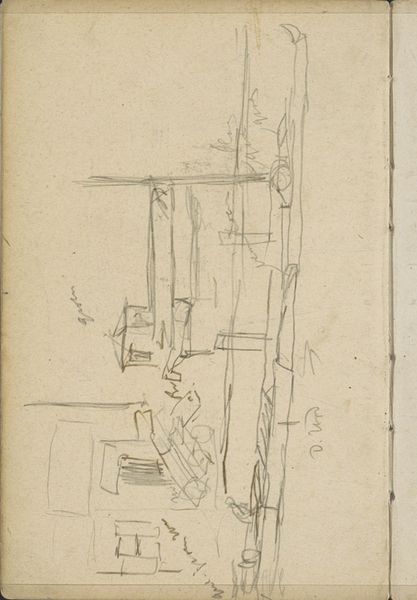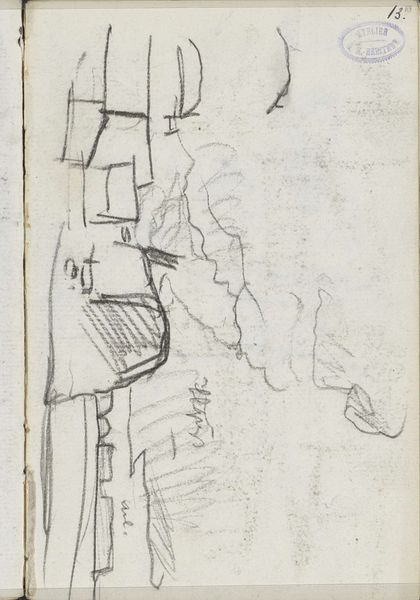
Copyright: Rijks Museum: Open Domain
Editor: This is "Gezicht op een straat in Amsterdam," a pencil drawing by George Hendrik Breitner, probably made sometime between 1886 and 1923. It feels very immediate and unfinished. What strikes you most about it? Curator: I'm drawn to the roughness of the pencil work and the apparent speed with which it was created. Consider this in relation to Breitner's photographic work. How might this sketch be connected to the larger social and economic context of image production in Amsterdam at that time? Editor: That’s a great question. Maybe this drawing served a different purpose than his photography, a cheaper or quicker way to document the city? Curator: Precisely. Pencil was a readily available and inexpensive medium. Think about the accessibility this offered Breitner compared to the more involved process of photography. This speed and simplicity also democratized art-making, didn’t it? Editor: Yes, and it suggests that artistic creation and visual documentation could become integrated with everyday experience. Almost anyone could use these materials to become a recorder. Does this shift artistic production or making closer to labor? Curator: Absolutely, the materiality of pencil connects drawing to the tradition of craft. We need to recognize the labor involved in its production, from graphite mining to the manufacturing process and the distribution networks. Consider also that these networks provided not just art supplies, but new methods for creating visual documentation for the everyday person. Editor: That makes me think differently about why he chose to sketch. It wasn’t just convenience, but a connection to a wider shift in artistic production. I’ve never thought of just a simple pencil holding so much significance! Curator: Exactly! Examining materials in artwork really grounds it in a historical and economic reality. The real work emerges in how we understand this object's history.
Comments
No comments
Be the first to comment and join the conversation on the ultimate creative platform.
